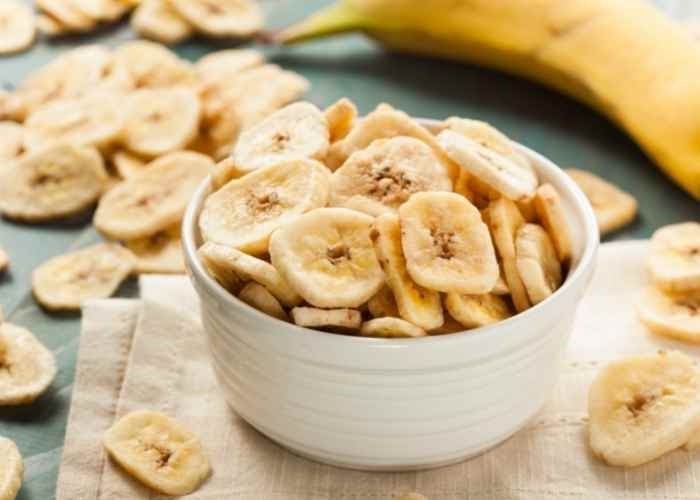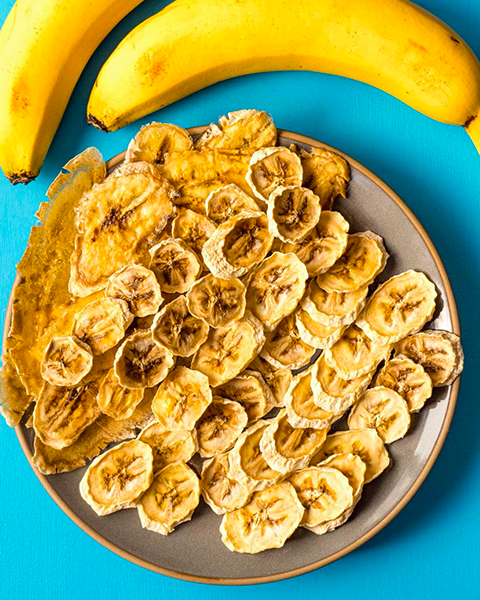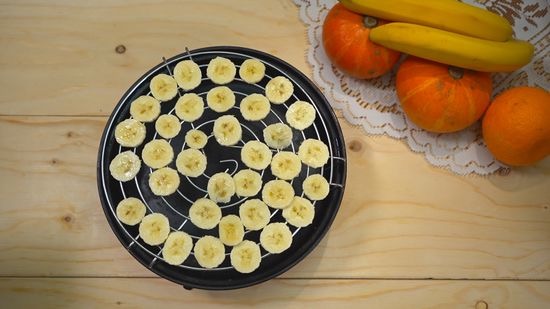
Content Menu
● Why Use a Food Dehydrator?
● Preparing Your Bananas
● Setting Up Your Dehydrator
● Tips for Successful Dehydration
● Storing Your Dehydrated Bananas
● Benefits of Dehydrated Bananas
● Creative Ways to Use Dehydrated Bananas
● Additional Information on Dehydration Techniques
>> Understanding Different Types of Dehydrators
>> Nutritional Benefits of Dried Fruits
>> Common Mistakes When Dehydrating Fruits
● Conclusion
● FAQs
>> 1. How long do dehydrated bananas last?
>> 2. Can I dehydrate overripe bananas?
>> 3. What other fruits can I dehydrate?
>> 4. Can I use a regular oven instead of a dehydrator?
>> 5. How do I know when my banana chips are done?
● Citations:
Dehydrating bananas is a fantastic way to preserve their flavor and nutrients while creating a delicious snack. This process is simple and can be done using a food dehydrator, which is specifically designed for drying fruits, vegetables, and meats. This article will guide you through the steps of dehydrating bananas, discuss the benefits of using a food dehydrator, and provide tips for achieving the best results.

Why Use a Food Dehydrator?
Using a food dehydrator offers several advantages over traditional drying methods:
- Controlled Environment: Dehydrators provide consistent temperatures that help prevent spoilage and ensure even drying.
- Energy Efficient: Compared to an oven, dehydrators use less energy and produce less heat, making them more efficient for long drying times.
- Versatility: Besides fruits like bananas, dehydrators can be used for vegetables, herbs, meats, and even making snacks like fruit leathers.
- Nutrient Preservation: Dehydrating at low temperatures helps retain vitamins and minerals that can be lost during other cooking methods.
Preparing Your Bananas
Before you start the dehydration process, it's essential to prepare your bananas properly. Here's how:
1. Select Ripe Bananas: Choose bananas that are ripe but not overly soft. They should have a few brown spots but still be firm.
2. Wash the Bananas: Rinse the bananas under cool water to remove any dirt or residues.
3. Peel and Slice: Peel the bananas and slice them into uniform pieces. Aim for slices about 1/4 inch thick to ensure even drying. You can cut them into coins or planks depending on your preference.
4. Pretreating (Optional): To prevent browning, dip the banana slices in an acidic solution. A common method is to mix 1 tablespoon of lemon juice with 1 cup of water and soak the slices for about 10 minutes before draining them.
Setting Up Your Dehydrator
Now that your bananas are prepared, it's time to set up your food dehydrator:
1. Arrange the Slices: Place the banana slices on the dehydrator trays in a single layer. Ensure they do not touch each other to allow proper air circulation.
2. Temperature Setting: Set your dehydrator to 135°F (57°C). This temperature is optimal for drying fruits without cooking them.
3. Dehydration Time: The drying process typically takes between 6 to 12 hours. Check the bananas periodically; they should be dry and leathery but not brittle when done.
4. Rotate Trays: If your dehydrator has multiple trays, rotate them every few hours to ensure even drying.
Tips for Successful Dehydration
To achieve the best results when dehydrating bananas, consider these additional tips:
- Slice Thickness: The thickness of your banana slices will significantly affect drying time. Thinner slices (around 1/8 inch) will dehydrate faster than thicker ones.
- Use Fresh Bananas: Always use fresh, ripe bananas for the best flavor and texture. Avoid overripe or bruised bananas as they may not dehydrate well.
- Avoid Overcrowding: Ensure that there is adequate space between banana slices on the trays to promote airflow and even drying.
- Check for Doneness: To determine if your banana chips are done, check their texture. They should be leathery with no moisture pockets but still pliable enough to bend without breaking.
Storing Your Dehydrated Bananas
Once your bananas are fully dehydrated, it's crucial to store them properly:
- Cooling: Allow the banana chips to cool completely before storing them to avoid condensation inside the storage container.
- Storage Containers: Use airtight containers such as glass jars or vacuum-sealed bags. Proper storage can extend their shelf life up to a year if kept in a cool, dark place.
- Conditioning: Before sealing your dried bananas in containers, consider conditioning them by placing them in a large jar for about a week. This helps equalize moisture content among pieces and prevents mold growth.
Benefits of Dehydrated Bananas
Dehydrated bananas are not only tasty but also offer several health benefits:
- Nutrient-Rich Snack: They are high in potassium and fiber while being low in fat, making them an excellent choice for healthy snacking.
- Convenience: Dried bananas are lightweight and portable, perfect for hiking trips or as on-the-go snacks.
- Versatile Ingredient: Use them in smoothies, baked goods, cereals, or trail mixes for added flavor and nutrition.
Creative Ways to Use Dehydrated Bananas
Dehydrated bananas can be enjoyed in various ways beyond just snacking:
- Smoothies: Blend dried banana chips into smoothies for added sweetness without extra sugar.
- Baking: Incorporate chopped dehydrated bananas into muffins or bread recipes for natural sweetness and moisture.
- Trail Mixes: Combine dried bananas with nuts, seeds, and other dried fruits for a nutritious trail mix perfect for outdoor adventures.
- Cereal Topping: Add dried banana pieces to your morning cereal or oatmeal for a boost of flavor and nutrients.

Additional Information on Dehydration Techniques
To further enrich your understanding of food dehydration techniques beyond just bananas:
Understanding Different Types of Dehydrators
There are primarily two types of food dehydrators available on the market:
1. Stackable Tray Dehydrators: These models consist of multiple trays stacked on top of each other with heat coming from either the bottom or top.
2. Box-Type Dehydrators: These feature horizontal airflow with trays placed side by side within an enclosed box-like structure allowing even heat distribution across all trays.
Each type has its pros and cons regarding capacity, efficiency, and ease of use; therefore selecting one based on personal needs is essential when considering investment in such equipment.
Nutritional Benefits of Dried Fruits
Dried fruits like bananas retain most of their nutritional value even after dehydration:
- They remain rich in essential vitamins such as Vitamin C (though some loss occurs), Vitamin A from beta-carotene sources found in certain fruits like apricots.
- The fiber content increases relative to fresh fruit due to reduced water content which aids digestion while providing sustained energy levels throughout the day.
Common Mistakes When Dehydrating Fruits
To avoid pitfalls during dehydration:
- Not pre-treating fruits can lead to undesirable browning effects caused by oxidation.
- Overcrowding trays leads to uneven drying which may result in some pieces being under-dried while others become overly dry.
By integrating these additional insights into your dehydration practices along with detailed instructions specific to banana dehydration techniques outlined above will ensure successful outcomes every time you engage with this preservation method!
Conclusion
Dehydrating bananas at home using a food dehydrator is a straightforward process that yields delicious results. By following these steps and tips, you can create healthy snacks that preserve the natural sweetness of bananas while extending their shelf life significantly. Whether you enjoy them alone or incorporate them into various recipes, dehydrated bananas are sure to become a staple in your kitchen!

FAQs
1. How long do dehydrated bananas last?
Dehydrated bananas can last anywhere from 6 months to a year when stored properly in airtight containers away from light and moisture.
2. Can I dehydrate overripe bananas?
While it's best to use ripe but firm bananas for dehydration, slightly overripe ones can still be used if they are not too mushy; just ensure they are sliced evenly.
3. What other fruits can I dehydrate?
You can dehydrate various fruits including apples, pears, peaches, apricots, mangoes, and berries using similar methods as for bananas.
4. Can I use a regular oven instead of a dehydrator?
Yes, you can use an oven set at its lowest temperature (usually around 150°F) to dehydrate fruits; however, it may take longer and require more monitoring than using a dedicated dehydrator.
5. How do I know when my banana chips are done?
Banana chips are done when they feel dry and leathery but still have some flexibility; they should not be brittle or crumbly.
Citations:
[1] https://simpleveganblog.com/how-to-dehydrate-fruit/
[2] https://etsolutions.in/how-does-a-food-dehydrator-work-explore-the-benefits-of-food-dehydrators/
[3] https://www.kitchenstewardship.com/how-to-dehydrate-fruits-excalibur-week/
[4] https://thenutmarket.com.au/blogs/health-benefits/how-to-dehydrate-fruit
[5] https://www.webmd.com/diet/dehydrating-food-good-for-you
[6] https://underatinroof.com/blog/2022/4/14/tips-for-dehydrating-fruits-and-vegetables
[7] https://www.backpackingchef.com/dehydrating-fruit.html
[8] https://terradomilho.eu/2019/03/the-advantages-of-dehydrating-fruit-and-vegetables/
[9] https://idontknowalltheanswers.com/dehydrating-bananas-and-strawberries/
[10] https://www.backpackingchef.com/dehydrating-bananas.html











